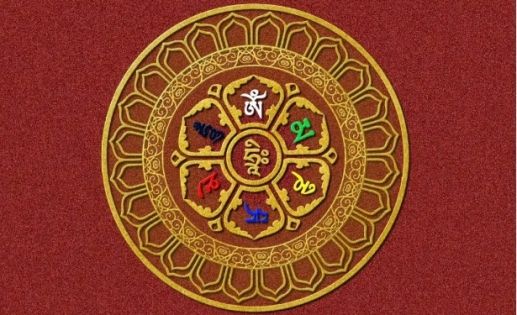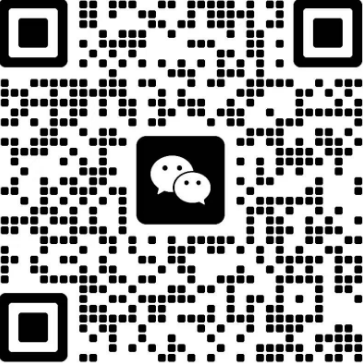Walking through the bustling streets of Lhasa, one cannot miss the rhythmic beat of hand drums and the sight of prayer flags, walls, and souvenirs engraved with the sacred six-syllable mantra. Both are more than just cultural ornaments—they are profound symbols of Tibetan spirituality and daily life. To understand them is to step closer to the essence of Tibetan culture.
1. The Tibetan Hand Drum: Origins and Evolution
1. Historical Origins
The Tibetan hand drum, often known as “damaru”, traces back centuries. Traditionally, it was used in Buddhist rituals, especially within Tantric practices. Crafted from wood, leather, and sometimes adorned with sacred paintings, the drum’s sound was believed to summon divine beings and drive away evil spirits.
2. Symbolic Meaning
The two faces of the drum symbolize duality—wisdom and compassion, male and female, the balance of opposites. When shaken, the drum creates a rhythmic sound that represents the heartbeat of the universe, reminding practitioners of the impermanence and interconnectedness of life.
3. Hand Drum in Daily Life
In modern Lhasa, the hand drum is not confined to monasteries. Street vendors sell beautifully decorated versions to pilgrims and tourists alike. Locals may carry a small damaru while walking around Barkhor Street, using its sound as a form of moving meditation. For visitors, buying or using one is a way to connect with local customs.
4. From Ritual to Souvenir
Over time, the hand drum has also become a cultural product. Artisans decorate them with dragons, auspicious symbols, or carved mantras, making them popular as gifts. Yet even as a souvenir, it retains its deeper significance, bridging spirituality with daily life.

damaru
2. The Six-Syllable Mantra: Om Mani Padme Hum
Historical Background
The six-syllable mantra “Om Mani Padme Hum” is one of the most sacred mantras in Tibetan Buddhism. It is closely associated with Avalokiteshvara (Chenrezig), the bodhisattva of compassion. Historical texts suggest that reciting the mantra invokes blessings, purifies negative karma, and cultivates compassion.
The Meaning of Each Syllable
-
Om: Purifies pride and ego.
-
Ma: Purifies jealousy and lust for entertainment.
-
Ni: Purifies passion and desire.
-
Pad: Purifies ignorance and prejudice.
-
Me: Purifies poverty and possessiveness.
-
Hum: Purifies aggression and hatred.
Together, the mantra represents the path from ordinary existence to enlightenment, guiding practitioners toward wisdom and compassion.
Ways of Practice
-
Recitation: Pilgrims chant it continuously while circumambulating temples or spinning prayer wheels.
-
Visual Representation: The mantra is inscribed on mani stones, prayer flags, and monastery walls.
-
Meditative Focus: Some meditate by visualizing the mantra in glowing light, allowing the syllables to dissolve into their heart.
Mantra in Everyday Lhasa
In Lhasa, you see the mantra everywhere: carved into stones near Jokhang Temple, printed on colorful prayer flags fluttering above rooftops, or whispered by elderly Tibetans as they spin prayer wheels. For the local community, the mantra is both a spiritual tool and a constant reminder of compassion.

Six-Syllable Mantra
3. The Intersection of Hand Drum and Six-Syllable Mantra
1. Rhythms of Devotion
When a pilgrim beats a hand drum while chanting “Om Mani Padme Hum,” sound and voice merge into a single spiritual practice. The steady rhythm helps maintain focus, making mantra recitation easier and more heartfelt.
2. Street Culture in Lhasa
Barkhor Street, surrounding Jokhang Temple, is the heart of Lhasa’s cultural life. Here, hand drums are sold alongside prayer beads and prayer wheels, and the six-syllable mantra fills the air as pilgrims walk clockwise around the temple. Together, these elements create a vibrant spiritual atmosphere, blending devotion with daily commerce.
3. Tourism and Cultural Transmission
For travelers, the hand drum and the mantra are gateways to Tibetan culture. Buying a drum or learning the mantra is not merely a souvenir—it’s an introduction to values of compassion, balance, and respect for life. However, understanding their true meaning is essential to appreciate them beyond their surface appeal.
4. Broader Cultural Significance
1. Connection to Music and Art
The hand drum reflects Tibet’s long-standing relationship with rhythm, sound, and spiritual music. Similarly, the mantra has inspired Tibetan calligraphy, painting, and sculpture. Both have influenced not just religious practice but also artistic expression.
2. A Bridge Between Generations
Elders pass down the significance of these symbols to younger Tibetans, ensuring continuity of tradition. For many families, teaching children to recite the mantra or use the drum is an act of cultural preservation.
3. Global Recognition
Today, the six-syllable mantra is recognized worldwide as a symbol of compassion, often used in meditation and yoga practices outside Tibet. The Tibetan hand drum, too, has found its way into world music and spiritual communities, symbolizing universal rhythm and balance.
5. Misunderstandings and Respectful Appreciation
Common Misconceptions
Some visitors may see the hand drum as only a toy or the mantra as a decorative pattern. This shallow view overlooks their deep spiritual roots. Using them without understanding can unintentionally disrespect local beliefs.
Guidelines for Visitors
-
Learn the meaning before using a drum or chanting the mantra.
-
Avoid placing sacred items like drums or mantra-inscribed objects on the ground.
-
Approach with respect: they are cultural treasures, not just souvenirs.
Conclusion
The hand drum and the six-syllable mantra are more than sights and sounds of Lhasa’s streets—they are living symbols of Tibetan spirituality, culture, and resilience. Together, they embody the heartbeat of a people deeply connected to compassion, balance, and the pursuit of enlightenment. For travelers, to hear the drumbeat or recite the mantra is not only an encounter with tradition but also an invitation to reflect on universal values. Experiencing them in Lhasa is a journey into the soul of Tibet itself.












